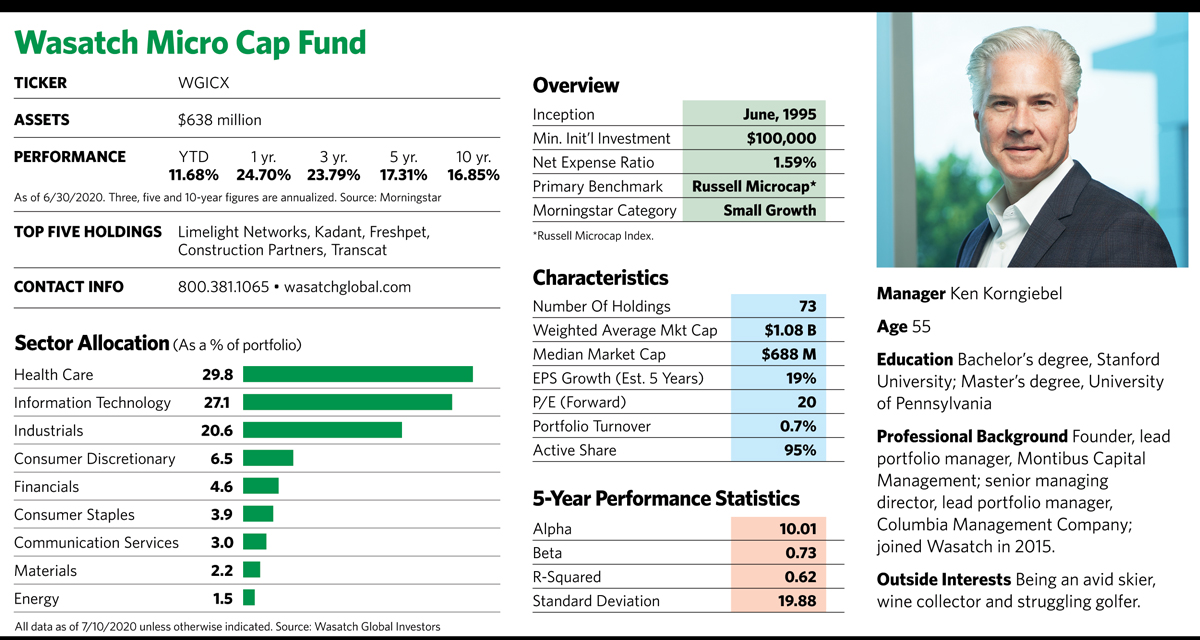And the fund has been resilient during the recent down market: In the first quarter of 2020, it fell 24.8%, while the index dropped 31.99%. The Wasatch portfolio benefited during this period from several things: It did not have significant positions in the heavily affected travel and tourism industry. It also held less than the benchmark in financials, which fell even more than the overall market, and the stocks the portfolio held here dropped less than the sector as a whole. The fund’s substantial presence in health care and information technology, two areas that did do well relative to other sectors of the market during the downturn, also supported its returns.
Growth Mix
Wasatch Micro Cap invests in a mix of companies with different growth patterns that fall into one of three categories. The first group, high growth, consists of companies with minimum annual earnings growth of 20%. An innovative or unique product or service gives these holdings the best shot at becoming mid-cap, or even large-cap names. A few companies in the portfolio, such as pet food purveyor Freshpet and Medallia, a technology firm that provides customer experience management tools, have graduated from the micro-cap space since Korngiebel first bought them. He continues to own them because their growth prospects remain strong.

The second group, the core growth segment, includes high-quality bedrocks with stable and growing earnings. These companies often experience mid- to high-single-digit annual growth rates. Although most of their growth is internal, they may acquire other firms as well.
The last contingent, fallen angels, consists of companies that have suffered a temporary setback but sell at compelling prices. During the market pullback, the fund added to positions in several stocks in this category, names whose prices had fallen particularly hard because of the Covid-19 crisis. “In market panics, extreme risk aversion can cause investors to unfairly punish the stocks of companies whose long-term businesses remain strong, but whose near-term prospects are much less certain,” he says.
Boot Barn, which sells Western and work-related apparel, is a fallen angel that sank with other stocks tied to the retail and restaurant industries as customers recently stayed home. In addition to pandemic trouble, the retailer also faced concerns about faltering oil prices in Texas, where it has a substantial presence.
“This is a multi-channel retailer with a substantial online presence that remains the 800-pound gorilla in its category,” Korngiebel says. “Its retail stores are also a plus because, unlike some kinds of clothing, most people like to try on boots before they buy them.”
The fund also added to pandemic-battered positions in Tex-Mex chain Chuy’s and Chefs’ Warehouse, which distributes specialty food products to high-end restaurants. Korngiebel says Chuy’s has beefed up its delivery capabilities and done a good job of keeping costs down. Although Chefs’ Warehouse “was priced like it is going out of business,” Korngiebel believes the company is well-positioned to once again capitalize on the growing foodie scene.








